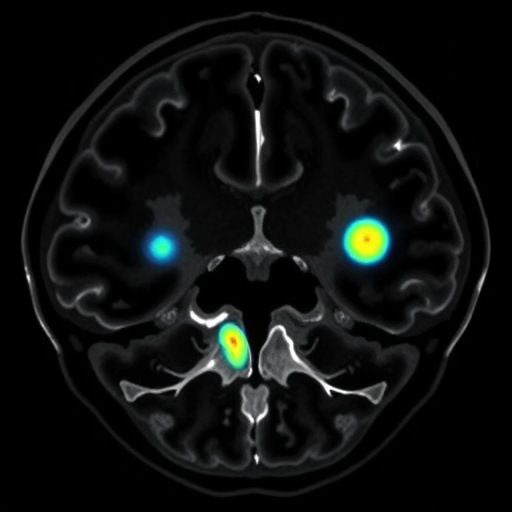In a groundbreaking study published in Pediatric Radiology, researchers investigated cochlear clefts in children, shedding light on their prevalence, characteristics, and clinical implications. Cochlear clefts are anatomical abnormalities of the cochlea that can have significant repercussions for hearing and overall auditory function. These clefts may go unnoticed for an extended period, especially in pediatric populations, and the new findings aim to raise awareness among clinicians for earlier detection and intervention.
The prevalence of cochlear clefts in children has often been underestimated in previous studies. However, this recent research highlights a more significant incidence than previously reported. By examining a substantial cohort of pediatric patients, the study provides compelling evidence that cochlear clefts are not as rare as once thought. This revelation has important implications for audiologists and pediatricians, who may not routinely screen for such conditions. The authors advocate for routine imaging in high-risk populations to ensure that cochlear clefts are identified and managed appropriately.
Moreover, the characteristics of these cochlear clefts vary, which can have profound implications for cognitive and social development in children. Some children may display mild to moderate hearing loss, while others may experience severe impairments that affect their ability to communicate effectively. The article emphasizes the need for clinicians to acquire a comprehensive understanding of the different manifestations of cochlear clefts, as the anatomical variations could influence the choice of management strategies. These strategies may include the use of hearing aids, cochlear implants, or surgical interventions, depending on the severity of the condition.
In many cases, cochlear clefts are associated with other congenital anomalies, complicating their diagnosis. The findings underscore the importance of a multidisciplinary approach when assessing children with known clefts or other developing ear constituencies. An integrated assessment can ensure comprehensive management, addressing not only hearing but also any associated developmental concerns. The relationship between cochlear clefts and other ear abnormalities or syndromic conditions opens a broader discussion regarding the genetic and environmental factors that may contribute to these abnormal developments.
The researchers conducted a comprehensive review of clinical data, imaging results, and audiometric assessments from a cohort of children diagnosed with cochlear clefts. Data collection included examinations via high-resolution computed tomography scans. This advanced imaging technique is crucial for visualizing the intricate structures of the cochlea and helps in forming a clearer picture of the cleft’s composition and its position within the ear structure. The study pioneers in utilizing cutting-edge imaging technology to elucidate the condition, potentially leading to new discoveries in pediatric otolaryngology.
Once identified, the management of cochlear clefts should be tailored to suit individual patient needs. Early intervention can result in better auditory outcomes and aid social and educational development. The article details various management strategies, emphasizing that the timing and method of intervention can vary depending on the type and severity of the cochlear anomaly. It discusses the necessity for ongoing audiological assessments throughout childhood, as changes in hearing ability can arise as children grow and develop. Pediatricians and audiologists must prioritize follow-up to track progress over time.
The clinical implications of undiagnosed cochlear clefts can be vast. Children may struggle with communication, social interactions, and learning abilities if not identified early. Many parents may be unaware of the potential impacts of such cleft abnormalities, leading to delayed diagnoses and interventions. The study ultimately aims to inform and empower both healthcare providers and families in understanding the importance of early detection and proactive management of cochlear clefts.
This research not only contributes to the pediatric otolaryngology field but also aims to promote broader awareness among medical professionals. By discussing cochlear clefts in the context of prevalent childhood conditions, the researchers advocate for pediatric specialists to enhance their knowledge and skills in recognizing these conditions early. The authors argue that interdisciplinary collaboration is the cornerstone of delivering optimal care for children with cochlear clefts and improving auditory health outcomes.
Significantly, there is a call for ongoing research to build upon these findings. The study provides a framework for future investigations into the genetic and environmental determinants of cochlear clefts, as well as their broader implications on health and development in children. Tackling these uncertainties is essential for developing more targeted therapies and interventions, ultimately leading to improved quality of life for affected children.
The researchers conclude by highlighting the critical nature of increased awareness surrounding cochlear clefts, presenting their findings as a clarion call to act. It is essential to integrate this knowledge into clinical practice, thereby fostering an environment where the early identification and management of cochlear clefts become standard practices in pediatrics and audiology.
The findings outlined in this study serve as a beacon for both current practitioners and future researchers, aiming to enhance diagnostic acumen and therapeutic strategies for cochlear clefts in children. By unearthing the complexities of this anatomical anomaly, the authors hope to inspire a more proactive approach among clinicians, improving outcomes and fostering healthier auditory development in susceptible pediatric populations.
Overall, while cochlear clefts have typically been a niche area of study in pediatric otolaryngology, this research serves as a vital entry point for enhanced awareness and understanding. As the field progresses, the importance of these findings cannot be overstated, propelling both the academic community and practitioners towards a future with improved auditory health for children worldwide.
Subject of Research: Cochlear clefts in children
Article Title: Cochlear clefts in children: prevalence, characteristics, and clinical implications.
Article References:
Boonrod, A., Phuttharak, W., Srisitthiprapha, W. et al. Cochlear clefts in children: prevalence, characteristics, and clinical implications.
Pediatr Radiol (2025). https://doi.org/10.1007/s00247-025-06423-y
Image Credits: AI Generated
DOI: https://doi.org/10.1007/s00247-025-06423-y
Keywords: cochlear clefts, pediatric otolaryngology, hearing loss, congenital anomalies, early intervention, high-resolution CT scans, multidisciplinary approach, audiology, pediatric care.
Tags: anatomical abnormalities in the cochleaclinical implications of cochlear cleftscochlear clefts in childrencognitive development and hearing lossearly detection of cochlear abnormalitiesimpact on auditory functionmanagement of hearing impairments in childrenpediatric audiology awarenesspediatric population hearing disordersprevalence of cochlear cleftsroutine imaging for cochlear cleftsscreening for cochlear clefts





